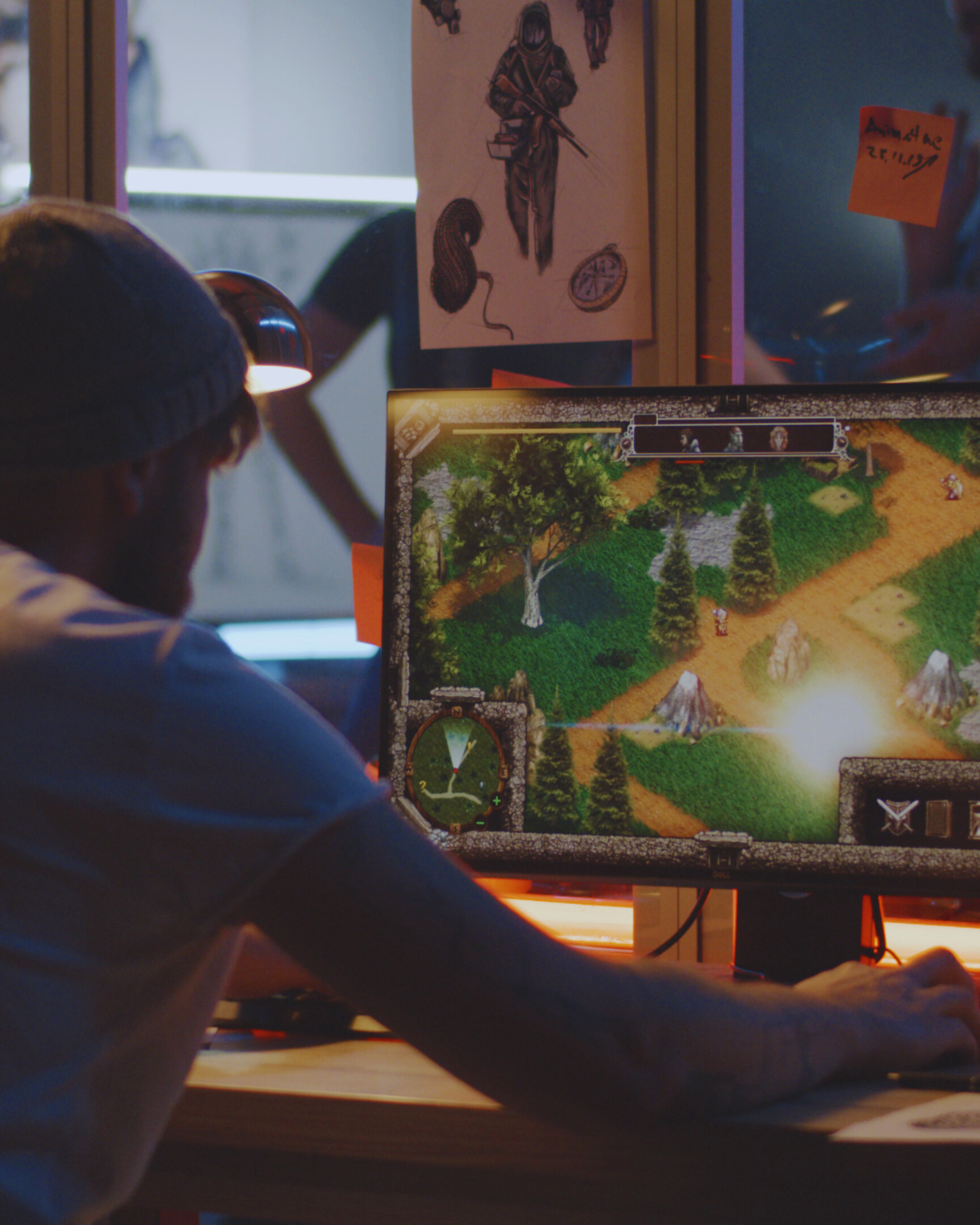The journey from concept to reality in video games is a complex and fascinating process. Creatives transform imaginative ideas into immersive experiences through careful design, programming, and collaboration. Each stage, from initial brainstorming to final release, plays a crucial role in shaping the end product, impacting gameplay, storytelling, and player engagement.
Developers face numerous challenges along the way, including technological limitations, budget constraints, and evolving player expectations. Adapting to these variables requires a keen understanding of both the creative and technical aspects of game development. This intricate balancing act is key to delivering compelling content that resonates with audiences.
As the gaming industry continues to evolve, examining how concepts are birthed and transformed into real-world experiences sheds light on the innovative spirit driving this entertainment form. From indie projects to blockbuster titles, the insights gained from this process illuminate the artistry involved in creating games that captivate millions.
Genesis of Videogames
The origins of video games trace back to the conceptual frameworks that inspired their creation. These early ideas laid the foundation for what would become a multi-billion-pound industry, defined by iconic titles and groundbreaking technology.
Conceptualizing the Virtual Arena
The concept of video games arose in the mid-20th century, driven by the convergence of computing technology and entertainment. Early inventors envisioned a digital space where players could engage in interactive experiences.
The first games were simple, relying on graphical representations of elements. Engineers like William Higinbotham created “Tennis for Two” in 1958, a primitive tennis simulator displayed on an oscilloscope. This laid the groundwork for future developments.
The emergence of home consoles in the 1970s revolutionized gaming. Companies like Atari introduced games that were accessible to the public, making the concept of interactive entertainment more mainstream.
Early Videogame Milestones
Several key milestones marked the evolution of video games. “Pong,” released by Atari in 1972, exemplified early gaming’s appeal with its simple yet addictive gameplay. This success prompted the steady growth of video gaming as a commercial entity.
In 1978, “Space Invaders” transformed the arcade landscape, adding depth with wave-based gameplay. Its success spurred a surge of interest and innovation within the industry. The 1985 launch of the Nintendo Entertainment System (NES) heralded a new era. Titles like “Super Mario Bros.” and “Donkey Kong” established enduring franchises. “Pac-Man,” introduced in 1980, became a cultural phenomenon, demonstrating the potential for video games to transcend mere gameplay into broader entertainment.
Design and Development
Game design and development encompass a variety of elements that contribute to the player’s experience. This includes artistic direction, technical execution, and an immersive auditory experience. Each aspect plays a crucial role in transforming concepts into an engaging reality.
Art and Aesthetics in Game Design
Art and aesthetics form the foundation of a game’s visual appeal. Game designers often begin the process with concept art, which helps to define the game’s style and character design. This initial phase allows for the exploration of different art styles, from photorealism to stylized graphics.
The design process involves collaboration between artists and designers to establish a cohesive visual language. They focus on color palettes, character animations, and environments that enhance storytelling. 3D graphics technology significantly impacts the design, providing realism and depth. Tools like Blender or Unreal Engine are commonly used in the industry, enabling designers to create detailed game worlds.
The Technicalities of Game Development
Game development is a complex process requiring meticulous planning and execution. Developers use various programming languages, such as C++ or Python, to build the game engine and functionalities. They are responsible for integrating graphics, physics, and gameplay mechanics.
The development process often follows an agile methodology, allowing teams to iterate and adapt quickly. Frequent testing and debugging are essential to ensuring a smooth player experience. Cross-discipline collaboration is vital, as programmers, artists, and designers work closely together to align their efforts. This synergy drives the project from concept to a playable game.
Music and Sound: Auditory Ambiance in Gaming
Music and sound effects enhance the gaming experience by creating an immersive atmosphere. The sound design process begins with defining the auditory identity of the game. Audio engineers design soundscapes, from background music to sound effects for actions like footsteps or explosions.
Incorporating music that aligns with the game’s themes is crucial. Composers often create scores that evoke emotions or build tension during gameplay. Quality sound design requires meticulous recording and mixing to achieve clarity and impact. Attention to detail in sound can significantly affect player engagement, making it a critical aspect of game design and development.
Technological Evolution and Gameplay Experience
The progression of technology has significantly reshaped gameplay mechanics and user interaction in video games. Key advancements in visuals, immersive technologies, and artificial intelligence have transformed how players engage with virtual worlds.
From 2D to 3D: Advancements in Visuals
The transition from 2D to 3D visuals marked a pivotal change in gaming. Early games featured simple pixel graphics, which evolved from 16-bit consoles to today’s sophisticated graphics engines. Systems like the Nintendo 64 laid the groundwork for 3D environments, enabling depth and realism.
Modern games utilize advanced rendering techniques such as ray tracing, producing lifelike lighting and shadows. Detailed textures and complex character models enhance player immersion. Iconic video game characters, once merely sprites, now inhabit richly crafted worlds, further enriching the gameplay experience.
Entering the Era of Immersive Gaming
Immersive gaming has expanded dramatically with the advent of Virtual Reality (VR) and Augmented Reality (AR). Devices like Oculus Rift and PlayStation VR transport players into three-dimensional environments, allowing them to interact with games on a physical level.
AR technologies, exemplified by Pokémon GO, blend virtual elements with the real world, creating engaging experiences in familiar spaces. These technologies reshape gameplay mechanics, demanding innovative user interfaces that adapt to these immersive settings. As a result, players engage with narratives and challenges in unprecedented ways.
Artificial Intelligence in Videogames
Artificial intelligence plays a crucial role in shaping gameplay experiences. AI governs the behavior of non-playable characters (NPCs), allowing for more nuanced interactions. Advanced algorithms enable NPCs to learn from player actions and adapt their strategies in real-time.
AI enhances storytelling by generating dynamic narratives that respond to player choices. In mobile gaming, AI helps tailor gameplay to individual preferences, ensuring a more personalized experience. The integration of AI has led to more complex gameplay mechanics, ultimately enriching the user experience and making games more engaging.
The Modern Gaming Industry and Online Ecosystem
The landscape of the gaming industry has evolved significantly with the rise of online gaming and its integration into everyday social interactions. This shift has transformed video games into a central cultural phenomenon.
The Rise of Online and Social Gaming Dynamics
Online gaming has flourished due to advances in technology and the internet, allowing players to connect globally. Platforms such as Xbox Live and PlayStation Network enable multiplayer experiences, fostering community and competition among gamers.
Social features such as voice chat and matchmaking have enhanced the gaming experience. Developers like Nintendo and Sega have also embraced online elements, creating interactive environments that engage players beyond mere gameplay.
The emergence of virtual reality (VR) through devices like Oculus Rift and HTC Vive further expands social dynamics. These technologies create immersive experiences, allowing for deeper interaction among players. As a result, online gaming has become a dominant force, shaping how games are played and perceived.
Video Games as Cultural Phenomena
Video games have evolved into a significant cultural force, influencing art, music, and storytelling. Major franchises developed by companies like Sony, Nintendo, and Xbox are now part of mainstream culture. Titles such as “The Legend of Zelda” and “Halo” have defined generations, creating lasting impressions on fans.
Level design and interactive storytelling have also gained recognition as valid forms of artistic expression. The gaming industry regularly collaborates with other sectors, including film and music, enhancing the multimedia landscape.
Additionally, gaming conventions and esports tournaments contribute to the cultural prominence of video games. Events like E3 and the Overwatch League attract widespread attention and participation, showcasing the global appeal of gaming. This cultural integration highlights the significance of video games in modern society, affirming their role as more than just entertainment.





Leave a Reply